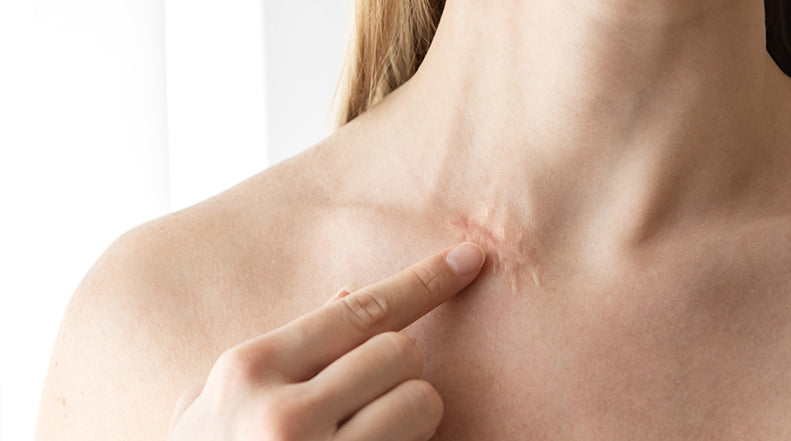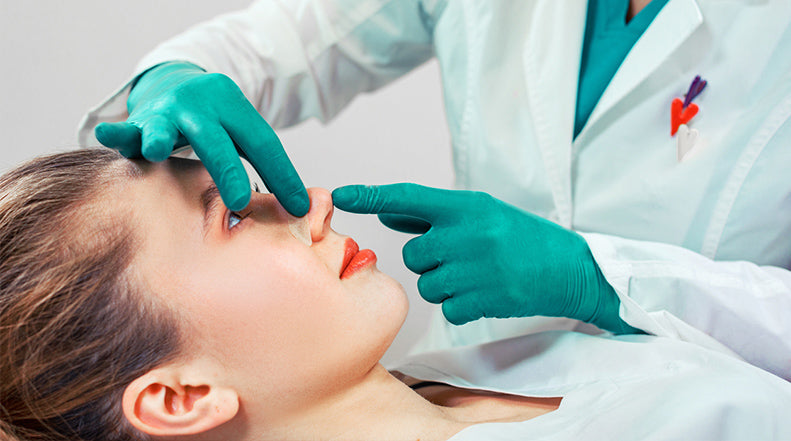Which Part of Your Body Scars the Worst?

Scars occur as a result of the body’s natural wound healing process. As you may know, some scars develop differently than others. Some fade into pale lines that are barely visible while others may become discolored or even raised, leaving you with a painful daily reminder of the incident that caused your skin to scar. While there are many factors that play a role in how a scar heals and its final appearance, one factor is the part of the body in which the scar is located. Keep reading to learn the reason why different parts of the body scar more easily than others.
THIN VS. THICK SKIN
Growing up your parents may have told you to have “thick skin” meaning to not be easily offended. While this is certainly a good quality to have, quite the opposite is true when it comes to thick skin and scars. In an interview with Goop, top plastic surgeon Steven Teitelbaum, M.D. explains that thin skin scars well and thick skin scars poorly. The thickness of skin varies on different parts of the body. For instance, the thinnest skin is the eyelid and the thickest is the soles of the feet.
MOVEMENT
Dr. Teitelbaum also shares that, “scars over the breastbone have a particular tendency to thicken, as well as scars on the side of the chest, such as the end of a horizontal breast reduction incision.” This is because there is always movement exerting tension in these areas of the chest, which causes scars to widen. The same concept is applicable to scars over a joint, such as the shoulder or knee. Because joints are repeatedly stressed in daily living, the skin is tighter and constantly stretched, which can make it very hard for injuries to heal properly.
LINES OF TENSION
Lines of tension, known as Langer’s lines or cleavage lines, are topological lines drawn on a map of the human body. They correspond to the natural orientation of collagen fibers in the dermis, which varies throughout the body. The location and direction of a wound in relation to these natural tension lines will dictate whether essentially the same-size cut will result in a scar that’s nearly invisible or not.
For instance, if you get a cut that is the same orientation as your lines of tension, chances are better that you will end up with a scar that is barely visible. However, if you get the same cut (same length and depth) but perpendicular to the lines of tension, a visible scar can result. Here’s a clear example: A horizontal cut on your forehead will blend into the natural lines and fade. But one that is vertical will cross those lines, spread and become more obvious.
AREAS OF THE BODY PRONE TO ABNORMAL SCARS
There are areas of the body that are more prone than others to form abnormal scars, such as keloids and hypertrophic scars. Both of these types of scars have a red, dark appearance, they are raised above the skin, and they can sometimes feel lumpy. Also, both keloids and hypertrophic scars are formed due to excess collagen production during the wound healing process. The difference between a keloid and a hypertrophic scar is that keloids will grow beyond the boundaries of the original wound, whereas hypertrophic scars will stay within these margins.
Areas of the body that have increased susceptibility to keloid and hypertrophic scar formation include the earlobe, the sternum, the deltoid region of the upper arm, and the upper back. It is thought that these areas are associated with keloid formation due to the higher levels of muscle and skin tension.
HOW NEWGEL+ PRODUCTS CAN HELP
No matter where on your body your scar is located, NewGel+ has a product that can help.
All NewGel+ scar treatment products are formulated with 100% medical grade silicone gel, the gold standard ingredient of topical scar treatment products. In fact, silicone gel is the top recommendation of physicians, surgeons, and scar management experts.
Take your pick from various sizes of sheets, strips, shapes, and two tube sizes of topical silicone gel to meet your scar needs. These products can treat a variety of scars, both new and old, such as C-section scars, general surgery scars, cosmetic procedure scars, burn scars, and even keloids and hypertrophic scars.




Comments